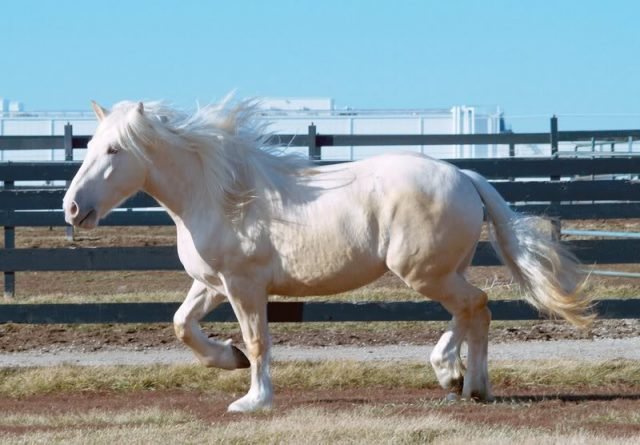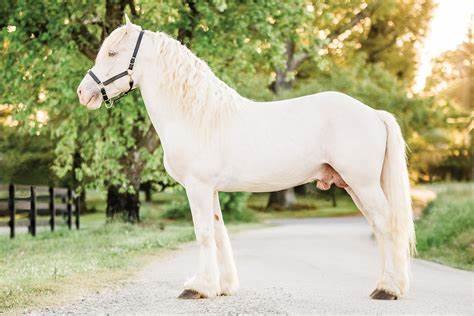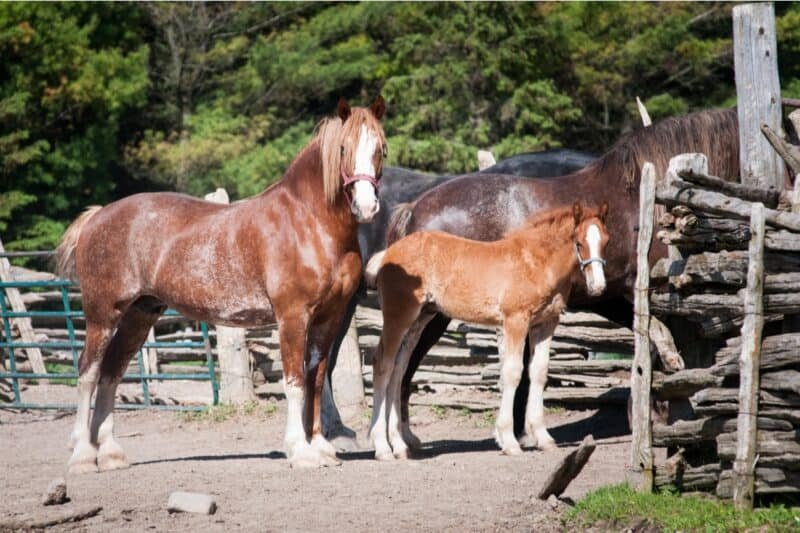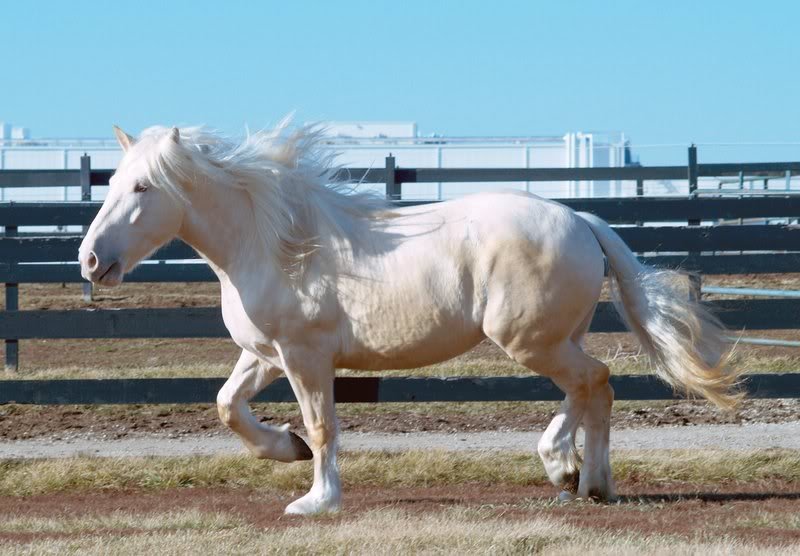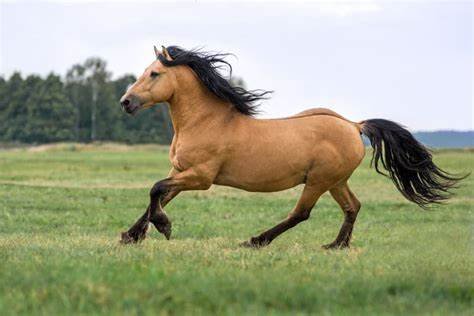Cream draft horses, known for their distinctive pale coat and remarkable strength, have played an important role in agriculture for centuries. These horses, a variation of traditional draft breeds, were bred specifically for their ability to perform heavy-duty tasks, such as plowing fields, pulling wagons, and carrying out other labor-intensive chores on farms. Over time, they became indispensable to agricultural communities, contributing to the growth and development of farming practices across different regions. In this post, we will explore the history of cream draft horses in agriculture, highlighting their unique qualities and the impact they’ve had on farming practices throughout history.

1. Origins and Development of Draft Horses
The history of draft horses dates back to ancient times, when horses were first domesticated for work purposes. Early civilizations in Europe, Asia, and the Middle East used horses for a range of tasks, from transportation to farming. As the need for heavier and stronger horses grew, breeders began to select horses with superior strength and stamina for tasks like plowing and hauling. These horses became the foundation of modern draft breeds, including the Percheron, Clydesdale, and Shire.
Cream draft horses are a specific variation of these traditional draft breeds, typically bred from horses carrying the cremello gene, which dilutes their coat to a light cream or golden color. This color variation is relatively rare, but cream draft horses share the same traits as their draft ancestors: immense strength, endurance, and the ability to work long hours in demanding agricultural environments.
2. Role of Draft Horses in Traditional Farming
For centuries, draft horses, including cream draft horses, were the backbone of agricultural work. Before the advent of modern machinery, farms relied heavily on horses to carry out tasks such as:
- Plowing Fields: Horses were used to pull plows, breaking up soil for planting crops. Their strength allowed them to pull heavy, cumbersome plows across large fields with efficiency.
- Hauling Equipment: Draft horses were used to pull carts and wagons, transporting goods and materials across farms. Whether it was moving harvested crops or transporting building materials, their power made them essential for these tasks.
- Threshing and Harvesting: In addition to plowing and hauling, draft horses also played a role in threshing grain. The horses would be harnessed to large threshing machines, helping to separate grain from chaff, which was essential during harvest season.
The reliability and strength of cream draft horses allowed farmers to complete large-scale agricultural tasks with fewer resources and less physical labor. Their ability to work steadily throughout the day made them invaluable partners on the farm, particularly in regions where heavy farming machinery was unavailable or unaffordable.
3. Cream Draft Horses and Their Unique Role
While most draft horses were used in agriculture, cream draft horses began to emerge as a unique variation in the late 19th to early 20th centuries. The lighter color and distinct appearance of cream draft horses made them stand out, but their strength and work ethic remained identical to that of traditional draft breeds. They were used primarily for the same tasks as other draft horses, but their appearance often made them more desirable for certain tasks or settings.
Cream draft horses were particularly appreciated for their temperament and easy-going nature, making them ideal for work in agricultural settings where consistency and reliability were crucial. Their docile nature, combined with their incredible power, made them popular among farmers who needed horses that could handle both heavy physical labor and interaction with people.
In some parts of the world, cream draft horses were selectively bred for their unique color and strength, though they were still a relatively rare sight compared to traditional draft breeds. This rarity made them even more prized in agricultural communities, where owning a cream draft horse could be a point of pride.
4. Decline of Draft Horses with Industrialization
The rise of mechanization in the 20th century, particularly with the advent of tractors and other farm machinery, led to a significant decline in the use of draft horses, including cream draft horses, in agriculture. Tractors and combine harvesters could perform tasks that once required the strength and endurance of horses, reducing the need for draft horses on the farm.
However, despite the shift to mechanical farming equipment, draft horses continued to be valued for certain applications. In some rural areas, particularly where farming was less industrialized, draft horses remained a crucial part of agricultural life. Cream draft horses, in particular, were sometimes used in more specialized tasks, such as logging, where their size and strength could be fully utilized.
Additionally, draft horses, including cream draft horses, never fully disappeared from agriculture. Many farmers and small-scale producers continued to use horses in places where tractors were not practical, such as on smaller farms, hilly terrain, or in more sustainable farming systems that prioritized animal labor over machinery.
5. Modern Uses of Cream Draft Horses in Agriculture
In the modern age, cream draft horses have found a niche in specific areas of agriculture, as well as in sustainable farming movements. While they are no longer the mainstay of large-scale industrial agriculture, their use is still seen in small farms, organic operations, and historical reenactments.
- Sustainable Farming: Many small farmers and those involved in organic or regenerative agriculture have returned to using draft horses for tasks like plowing, harrowing, and hauling. This approach aligns with the principles of sustainability and low-impact farming, as horses can work the land without the need for fossil fuels.
- Heritage and Tourism: In some regions, cream draft horses are kept for heritage purposes, where their historical role in agriculture is celebrated. Horse-drawn plowing demonstrations, wagon rides, and farm tours often feature draft horses, including cream-colored varieties.
- Therapeutic and Educational Roles: Cream draft horses are also used in educational programs and therapy work, where their gentle nature and size make them excellent companions for children or adults with disabilities. In some farming communities, they serve as working animals in agricultural education programs, helping to teach future generations about sustainable and traditional farming methods.
Conclusion
Cream draft horses have a rich history in agriculture, where their strength, temperament, and versatility made them indispensable on the farm for centuries. Although their use declined with the rise of industrial machinery, they still play an important role in sustainable farming and have found new life in modern-day agricultural practices. Their legacy is a testament to their incredible work ethic, and their unique appearance continues to make them a beloved and cherished part of agricultural heritage.







